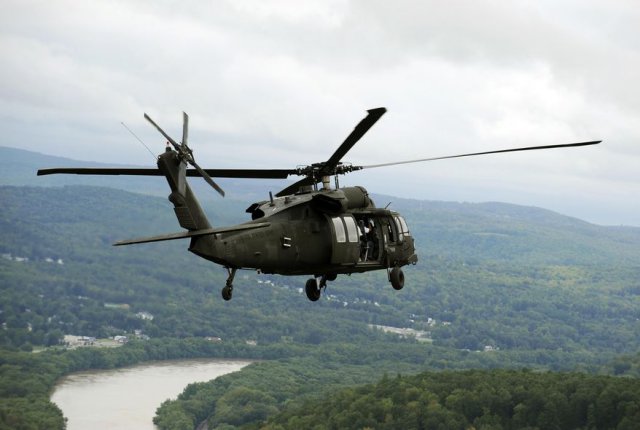The Sikorsky UH-60 Black Hawk has been a staple of U.S. military operations going back more than 30 years, but the Pentagon is now closer than ever to ditching one of the iconic chopper’s most important components: the pilot.
Aircraft maker Sikorsky announced plans last year to convert a retired Black Hawk helicopter into an “optionally piloted” aircraft, and Army officials said on Thursday that a recent test of the prototype proved to be a success.
Paul Rogers, the director of the Army’s Tank Automotive Research Development and Engineering Center, or TARDEC, told DefenseOne this week that the custom-built chopper was able to pick up payload and deliver it several miles away all on its own.
“The unmanned ground vehicle moved through a 10-kilometer scenario where it faced different chemical, biological hazards and then fed that data back via satellite,” Mr. Rogers explained, all the while towing a amphibious all-terrain vehicle, or AATV, to a drop zone near West Palm Beach, Florida.
If the Pentagon sees similar success in future tests, then further plans may be developed for a fleet of UH-60s capable of either flying autonomously or with the aid of a remote pilot — options that could diminish the odds of another tragedy like last year’s Black Hawk crash that killed 11 service members in the Gulf of Mexico.
“Robotics and autonomous systems are key to [having a] differential advantage over our adversaries,” Mr Rogers told attendees of the Association for Unmanned Vehicle Systems International Conference in Arlington, Virginia, on Thursday.
Robert Sadowski, a roboticist with TARDEC, told DefenseOne that recent breakthroughs courtesy of Sikorsky could mean that older choppers stand a chance at being retrofitted instead of retired, breathing new life into decades-old aircraft and adding a new type of unmanned aircraft to an arsenal of drones that has steadily grown during the last several years.
Sikorsky has really advanced their technology quite a bit on the unmanned side with their own internal research and development,” TARDEC roboticist Robert Sadowski told Defense One.
Sadowski noted that the Army has some 2,500 Black Hawks. “If you can retrofit them,” he said, “now you can do autonomous logistics when the crew is resting. It gives you the ability to have an enhanced operational tempo. It can be retrofitted across the older UH-60s. In fact, they’re trying to do that to show that it can be done.”
“The autonomous Black Hawk helicopter provides the commander with the flexibility to determine crewed or un-crewed operations, increasing sorties while maintaining crew rest requirements,” Sikorsky Vice President of Research & Engineering Mark Miller said previously of the project. “This allows the crew to focus on the more ‘sensitive’ operations and leaves the critical resupply missions for autonomous operations without increasing fleet size or mix.”
Nearly 62 percent of in-theater casualties suffered by American troops during the Gulf War resulted from either friendly fire or other accidents, according to Navy research, whereas 21.5 percent of casualties in the current drone age are reported as as “non-hostile,” the San Diego Union-Tribune reported last year.
Source: The Washington Times

